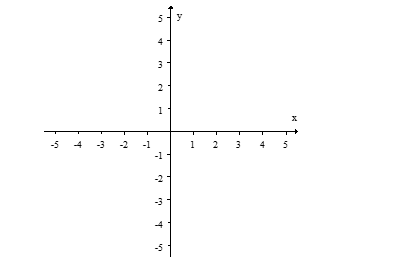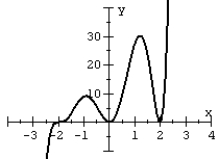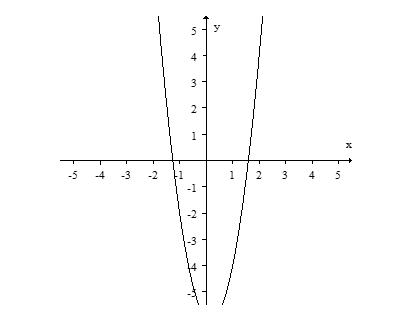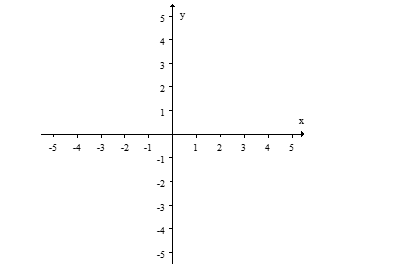A) ![]()
B) ![]()
C) ![]()
D) ![]()
Correct Answer

verified
Correct Answer
verified
Short Answer
Divide the polynomials using long division.

Correct Answer

verified
Correct Answer
verified
Multiple Choice
Find the general form of the equation of a parabola whose vertex is
 And passes through the point
And passes through the point

A) ![]()
B) ![]()
C) ![]()
D) ![]()
Correct Answer

verified
Correct Answer
verified
Multiple Choice
Use synthetic division to divide the polynomials. Express the answers in the form of
 And
And


A) ![]()
B) ![]()
C) ![]()
D) ![]()
Correct Answer

verified
Correct Answer
verified
Short Answer
Graph the equation


Correct Answer

verified
Correct Answer
verified
Short Answer
For the rational function
 , find the equation of the slant asymptote.
, find the equation of the slant asymptote.
Correct Answer

verified
Slant asym...View Answer
Show Answer
Correct Answer
verified
View Answer
Multiple Choice
Match the graph to the polynomial function. 
A) ![]()
B) ![]()
C) ![]()
D) ![]()
Correct Answer

verified
Correct Answer
verified
Multiple Choice
Given that 6 is a zero of the polynomial P(x) = x3 - 18x2 + 107x - 210, determine all other zeros.
A) -5 and 7
B) 5 and 7
C) -5 and -7
D) 5 and -7
Correct Answer

verified
Correct Answer
verified
Short Answer
Find the equation for the graph.

Correct Answer

verified
Correct Answer
verified
Multiple Choice
For the rational function
 , find all the vertical asymptotes and horizontal asymptotes.
, find all the vertical asymptotes and horizontal asymptotes.
A) ![]()
B) ![]()
C) ![]()
D) ![]()
Correct Answer

verified
Correct Answer
verified
Multiple Choice
Find all the real zeros (and state their multiplicity) of the polynomial function. 
A) 0, -2, 3
B) -2, 3
C) ![]()
D) ![]()
Correct Answer

verified
Correct Answer
verified
Short Answer
Use Descartes' rule of signs along with the rational root theorem to sketch a graph of the polonomial. P(x) = x3 - 4x2 - 6x + 14
Correct Answer

verified
Correct Answer
verified
Multiple Choice
For the polynomial function f(x) = x7(x + 14) 2(x - 8) , determine whether the graph touches or crosses at the x-intercept (0,0) .
A) touches the x-axis at (0,0)
B) crosses the x-axis at (0,0)
C) touches the x-axis at (8,0)
D) neither
Correct Answer

verified
Correct Answer
verified
Multiple Choice
Use Descartes' Rule of signs to determine the possible number of positive real zeros and negative real zeros. P(x) = 2x5 + 4x4 - 3x - 6
A) ![]()
B) ![]()
C) ![]()
D) ![]()
Correct Answer

verified
Correct Answer
verified
Short Answer
Find the standard form of the equation of a parabola whose vertex is
 and passes through the point
and passes through the point

Correct Answer

verified
Correct Answer
verified
Short Answer
Sketch the graph of the polynomial function,
 , using intercepts and end behavior.
, using intercepts and end behavior.

Correct Answer

verified
Correct Answer
verified
Short Answer
The concentration of a drug in the bloodstream, measured in parts per million, can be modeled with a quadratic function. In 64 minutes the concentration is 613.256 parts per million. The maximum concentration of the drug in the bloodstream occurs in 250 minutes and is 1097.6 parts per million. -Find a quadratic function that models the concentration of the drug as a function of time in minutes.
Correct Answer

verified
Correct Answer
verified
Multiple Choice
Find the domain of the function 
A) ![]()
B) ![]()
C) ![]()
D) ![]()
Correct Answer

verified
Correct Answer
verified
Multiple Choice
Determine if the function
 Is a polynomial. If it is, state the degree.
Is a polynomial. If it is, state the degree.
A) Not a polynomial
B) a polynomial of degree -22
C) a polynomial of degree 49
D) a polynomial of degree 4
Correct Answer

verified
Correct Answer
verified
Multiple Choice
Use Descartes' rule of signs to determine the possible number of positive real zeros, negative real zeros, and imaginary zeros. P(x) = x3 - 10x2 + 8x + 6
A) ![]()
B) ![]()
C) ![]()
D) ![]()
Correct Answer

verified
Correct Answer
verified
Showing 61 - 80 of 141
Related Exams